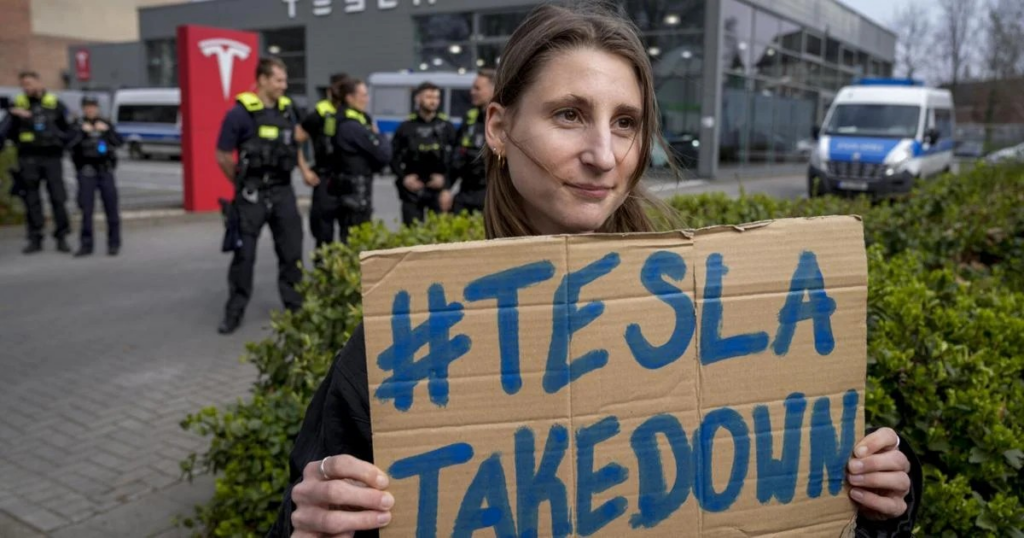
A storm of protests is sweeping across the globe as activists rally against Tesla CEO Elon Musk, targeting his controversial policies and practices in what is being called the “Tesla Takedown” movement. Spanning cities across the United States, Canada, and Europe, hundreds of demonstrations are drawing attention to Musk’s dual role as a tech mogul and a political figure.
At the heart of the movement is mounting criticism of Musk’s tenure as the head of the Department of Government Efficiency, a role in which he has championed dramatic reductions in government spending, regulations, and workforce size. His approach has earned him both fierce supporters and vocal critics. Activists claim Musk has misled the public on federal spending while pushing policies that, in their view, threaten the public good.
The “Tesla Takedown” initiative is urging participants to take bold steps in protest—calling on Tesla owners to sell their vehicles and investors to shed their Tesla shares. With more than 200 demonstrations planned at Tesla locations in the U.S. alone, and hopes of reaching 500 protests globally, the movement represents a growing wave of dissatisfaction with Musk’s perceived influence over government and business practices.
This global day of action reflects deep-seated concerns about the intersection of corporate power and public governance, bringing Musk’s leadership style into sharp focus. Yet, as with any high-profile protest, the world will be watching to see whether the “Tesla Takedown” creates tangible change—or sparks new debates about the power dynamics between corporations and the public they serve.



